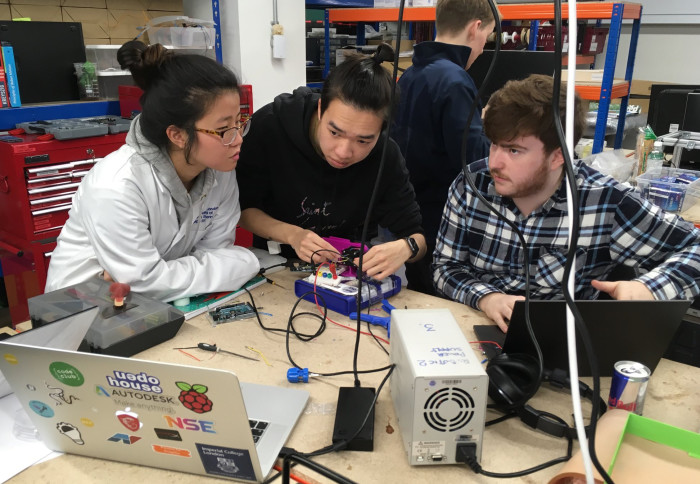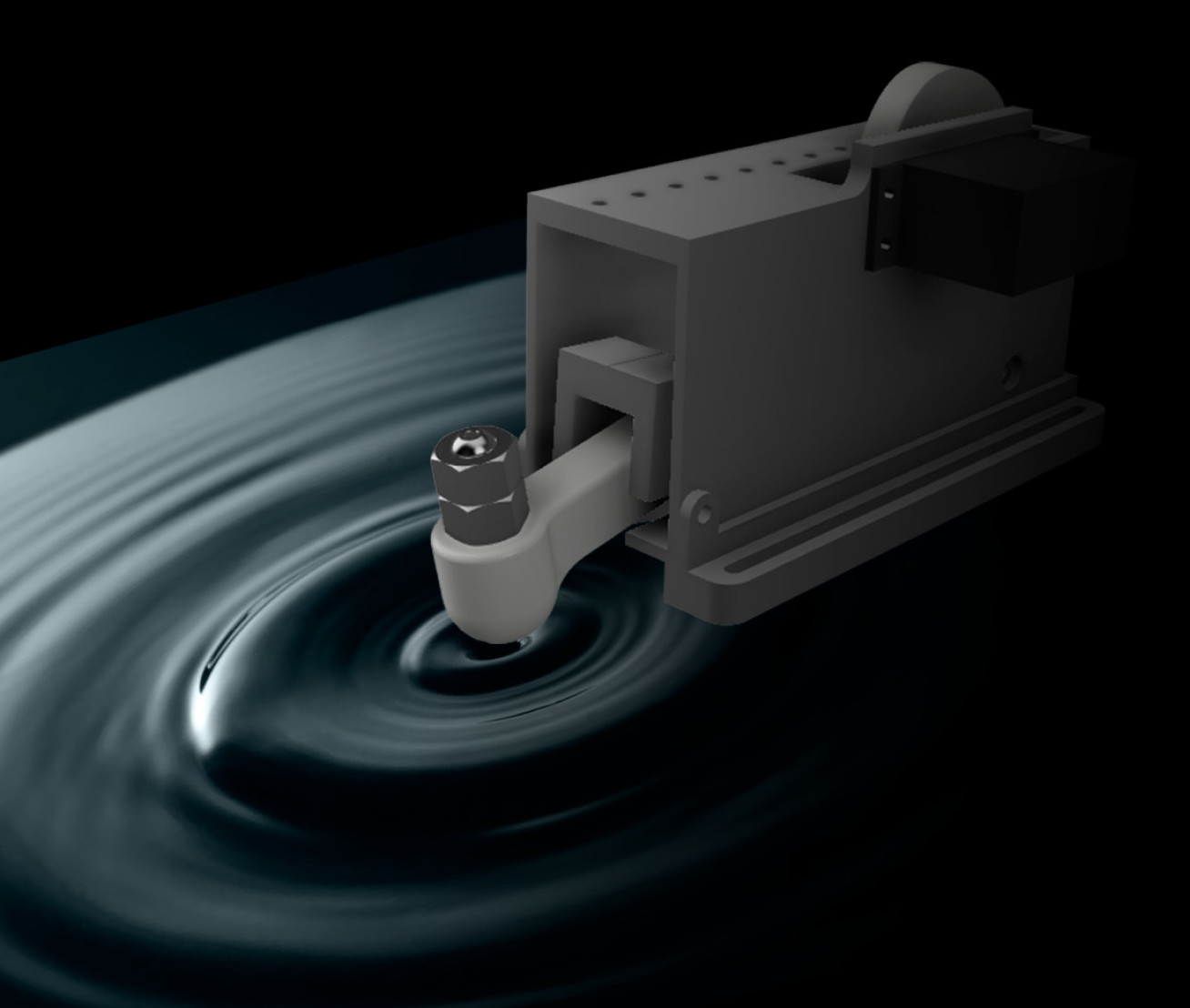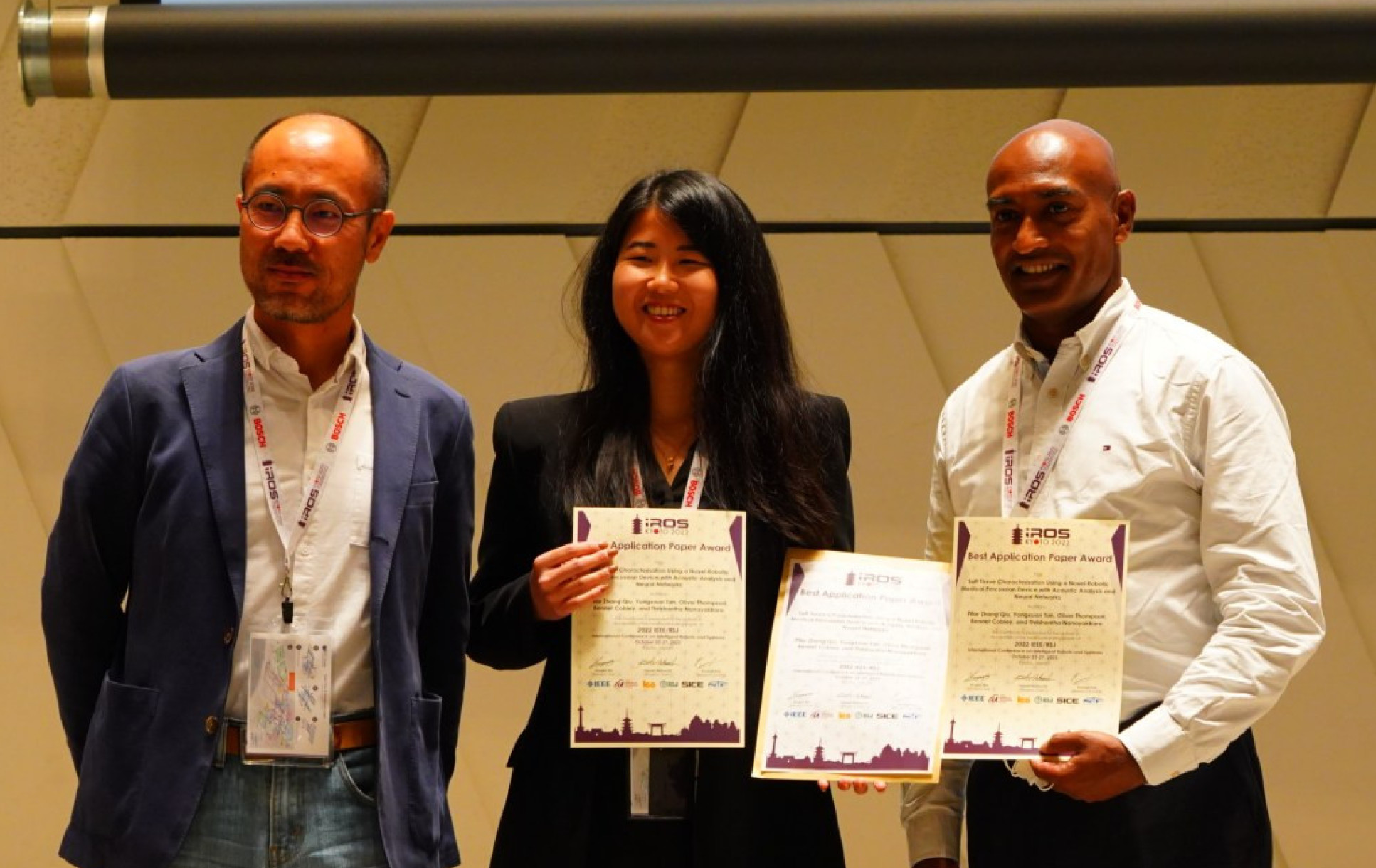Imperial engineering students awarded international robotics prize

A team of Imperial students have been awarded a prestigious robotics prize for their work on medical percussion.
The team of Engineering department students – Pilar Zhang Qiu, Yongxuan Tan, Oliver Thompson and Bennet Cobley – won a prestigious robotics prize, the Best Application Paper Award (sponsored by ICROS), at the 2022 IEEE/RSJ International Conference on Intelligent Robots and Systems in Kyoto, Japan.
Their paper, which originated as a group project, was selected for the award from over 3,500 papers presented at the conference.
Supervised by Professor Thrishantha Nanayakkara, the team built an AI-powered robot capable of performing preliminary percussion examinations.
It was a life-changing experience to be able to work with Professor Thrishantha Nanayakkara. Pilar Zhang Qiu
Percussion is a clinical technique used to quickly detect conditions, including inflammation of the liver or presence of liquid in the lungs, by tapping on the chest or abdomen. Different types of tissue make different sounds when percussed; a solid mass makes a dull sound, whilst the sound produced by hollow tissue is more resonant.
The nature of the sound can tell a clinician a lot about the tissue underneath and can help decide whether to pursue more expensive procedures such as an MRI scan.
Mimicking human percussion

The team wanted their robot to mimic human percussion as closely as possible, so they gave it two joints: one to mimic the elbow and one to mimic the wrist.
The robot tapped on silicone surfaces with embedded nodules designed to resemble human tissue anomalies. They used a contact microphone to record the percussion sounds and analysed the data using neural networks.
The team found that their system was able to identify and categorise the sounds based on the composition of the tissue underneath with 97.5% accuracy.
The benefits of robotic percussion
Having a robot perform percussion reduces the variability between clinicians’ techniques and interpretations of the results.

In addition, team member Pilar explained that the technology also has potential telehealth applications. For instance, if somebody was not able to physically attend a surgery, the robot could be available in their home to percuss, record the sounds, and send preliminary assessments to a clinician for review remotely.
Commenting on the project and the award, Pilar said: “It was a life-changing experience to be able to work with Professor Thrishantha Nanayakkara. One of the best things about Imperial is the access to researchers who are knowledgeable and passionate about their work.”
Article text (excluding photos or graphics) © Imperial College London.
Photos and graphics subject to third party copyright used with permission or © Imperial College London.
Reporter
Annalise Murray
Communications Division